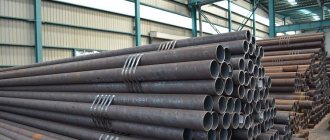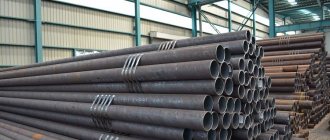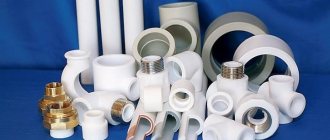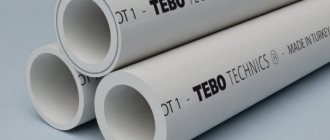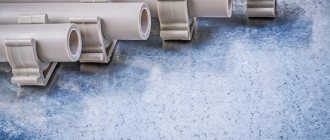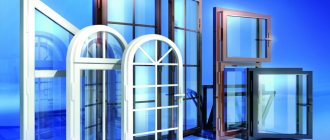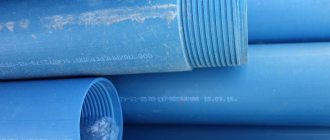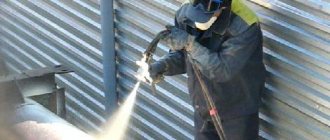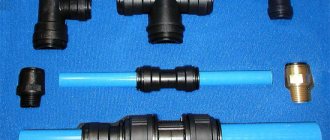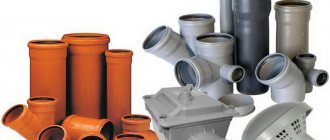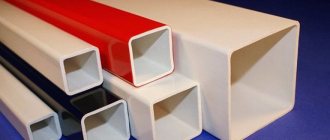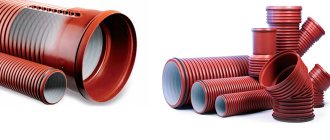Polypropylene is a plastic polymer with an extremely wide range of applications. Currently, it is the most popular plastic. As with all other polymolecular compounds, wide application is due to the properties of the polymer.
Physical properties of polypropylene
- Polypropylene has a low density. This characteristic sets it apart from its fellow polymers, which are characterized by high density.
- High strength connection. Numerous experiments prove the ability of polypropylene to withstand high loads.
- Heat resistance to extreme temperatures. The material perfectly tolerates both high and low temperatures down to – 100 C, as well as sudden temperature changes.
- The melting temperature of the material is 160-1700C
- High dielectric properties allow it to be widely used as a current-insulating material.
- Easy to work with material. Polypropylene can be easily drilled, sawed, and easily welded back; it does not deteriorate due to temperatures, is not subject to biodeterioration, and does not rot.
Isotactic polyc is divided into three main types.
The first type is homopolymers (PP-H) (PolyPropylene Homopolymer) of polypropylene without copolymer additives.
It is considered a more rigid material and can be used for the manufacture of various containers and pipes for cold water and other non-pressure pipes. Pipes made of such material can be resistant to moderate mechanical loads. The material is durable, but crystallizes at temperatures below zero and becomes soft if heated. It melts at a temperature of 140 degrees.
PP-H does not like sudden movements. Those. in light frost it can be broken like Ilyich’s lamp if it is thrown from the heat. Eh, “There was a smokehouse and a candle - now Ilyich’s lamp.”
In general, we won’t be able to save the lamp, and so that the polymer does not break down, something else is added to its molecular structure and a second type of block copolymer of propylene with ethylene is obtained.
PP-B copolymer (PolyPropylene Block copolymer)
This type of poly has slightly higher impact strength at low temperatures, as it is more elastic.
More resistant to elevated temperatures compared to PP-H due to additional polyethylene structures. Resistant to thermal-oxidative destruction during its production and processing.
It crystallizes already at minus 20 degrees. Those. in the cold it can be broken like a fragile vase...
The applicability of pipes made from this material is the same as PP-H + it can be used in underfloor heating systems, i.e. in low temperature heating systems.
The material has good chemical resistance, but has a very high linear elongation.
The third type of polyc is a random coplimer. PP-R or PP-RC
Statistical copolymer of polypropylene and ethylene. The molecule of which is placed randomly in the structure of the polymer.
This type of polypropylene is even more elastic and temperature resistant.
If pipes made from PP-H and PP-B can be used exclusively with cold water and maybe with low-temperature heating, then PP-R can be used in high-temperature heating systems, for hot and cold water.
The melting point is already from 170 degrees, i.e. This type of polypropylene can withstand short-term coolant temperatures of up to 130 degrees, but at minimal pressure. Maximum operating temperature 90 degrees.
I said this for those who decided to tie a solid fuel boiler with polypropylene pipes. Please note that I am only talking about piping a solid fuel boiler. I'm not talking about the system as a whole. In order for the system to work properly, you need to select certain pipes and drive a certain temperature into this system. If all this is chosen correctly, the system will work properly for a long time.
I do not recommend tying a solid fuel boiler with PP pipes, because something may be faulty (someone overheats or something else) and the temperature will rise much higher than what the PP pipes are designed for, then such a system will work not for long.
Here’s the situation: the manufacturer limits the operating temperature to 90 degrees at a pressure of 6 bar. These are pipes of the fifth class of operation.
This means that if there is a risk of increasing the temperature of the coolant in a high-rise building by more than 90 degrees, then this pipe cannot be installed in such a system.
Or, returning to my example, in your private home there is no 6 bar, as a rule it is 1.5 bar. This means that at this pressure, your PPR pipe will briefly withstand 130 degrees.
This implies the following: The manufacturer is insured and does not allow PP pipes to be used at temperatures more than 90-95 degrees (some types 110 degrees).
Personally, my team and I do not piping the solid fuel boiler with polypropylene pipes in our systems, since I build the most durable systems possible.
But if you need to make a temporary piping or you have no alternatives at all, then you can tie the system with polycom, but as they say at your own peril and risk, not forgetting that such a piping may not work for very long if the boiler for some reason reasons will work in extreme modes.
Based on the above, it turns out that PP-R: 1. has sufficient strength for use in heating and water supply systems.
- If you choose the right type of pipes and operating mode, then the lifespan exceeds 50 years for cold water and more than 25 years for hot water and heating, and this is already more than steel pipes.
- The pipe inside is smooth, which means they are resistant to deposits.
- Low thermal conductivity, which allows you to save on thermal insulation, and pushes back the threshold for condensation formation in comparison with metal systems.
- Corrosion resistant.
- Ability to withstand operating pressure of 10 bar and burst pressure of up to 100 bar (depending on temperature and pipe type)
- Pipes are many times lighter than steel and easier to install
- Low material cost.
All this is why these pipes are so popular.
I have greatly summarized all systems and types of polypropylene so that the structure of formation of this material can be easily understood by the average user.
If you understand this from the point of view of a chemist and product manufacturer, then a more detailed study will be required, since with the use of certain impurities, you can obtain alloys with completely different characteristics.
I would like to draw your attention to the fact that PPR and PP-R, PPH and PP-H are not the same thing. This is important not for us customers, but for manufacturers of products and raw materials, and I won’t go there because I’m not a chemist.
At the time of the creation of the video, pipes are still sold in stores, where they are labeled as they wish. Manufacturers label not as they should, but as they want. For example, if I take an Ostendorf sewer pipe and look at the markings, I can clearly see that the pipe is PP-H.
I know that the melting point of PP-H is much lower than that of PP-R.
I called the official representative office in Moscow and found out what material their pipe is made of. They clearly answered me that their pipes are definitely made from the third type of material PP-R.
I asked why such markings? I asked this question because the melting point of this pipe is similar to the melting point of the PP-R pipe.
They told me that they themselves don’t know why they mark it that way. Moreover, PP pipes sold in hardware stores are often labeled not as PP-R, but simply PPR. It is not the same.
Briefly, PPR is a copolymer with a medium polyethylene content.
And PP-R is a random copolymer. We are only interested in markings with a hyphen. Examples of marking polypropylene as a material, but not as pipes.
Above, I said that polypropylene includes a certain percentage of polyethylene to give the material certain properties, and so, polypropylene is labeled taking into account the ethylene content in it:
PPM - Low polyethylene content block copolymerPPR - Medium polyethylene content block copolymer PPU - High polyethylene content block copolymer PPH - Very high polyethylene content block copolymer
But PPH is not the same as PP-H with a hyphen. EPP - Expandable polypropylene.
There is a separate paragraph about pipe marking, but since we are now talking about types of polypropylene, let’s broaden our horizons a little.
Based on what I said above, we find that for the manufacture of polypropylene systems, mainly highly isotactic polypropylene random copolymer and its modifications are used, which are labeled as PP-R, which has better frost resistance, better strength and lower linear elongation compared to other types, but That's not all.
Chemical properties of polypropylene
Polypropylene, a relatively chemically resistant material. It does not react with most acids, which allows it to be widely used in the chemical industry, especially when installing ventilation ducts, in chemical and industrial plants.
Strong oxidizing agents such as nitric acid, oleum, and halogens have a more significant effect on polypropylene. Concentrated sulfuric acid and hydrogen peroxide react only with prolonged contact and at a temperature of 600 C, they lead to the destruction of the material.
Numerous studies have shown that polypropylene has high environmental and human safety indicators. It will not release harmful substances into the environment. It can be safely, without fear of poisoning, used to make containers for drinking water and food.
Production of PP fabric
Polypropylene thread is made by extruding or blow molding molten raw materials (at a temperature of 100°C), followed by cooling in an air chamber and winding onto bobbins. At the final stage, the fibers are cut according to the specified parameters.
During the production process, 2 types of synthetic threads are obtained: filament (twisted from ultra-fine fibers) and staple. PP fabric is made by gluing or pressing (passing through heated calender rolls). In some cases, continuous length fibers are used (for example, in the manufacture of spandob).
PP in its pure form is rarely used for the manufacture of upholstery fabrics, car covers and carpets. Other synthetic components (polyester, polyamide, etc.) are added to the polymer fibers.
Polypropylene recycling
Nowadays, there are five main ways of processing polypropylene - extrusion, blowing, injection molding, foaming, molding.
Processing methods such as casting and extrusion are the most popular at present. Under their influence, extruded and injection molded polypropylene is obtained.
Extruded is made in the following way: polypropylene powder or granules are loaded into a chamber heated by steam, and the compound is squeezed out of it through a molding hole. As it leaves the reactor, the polypropylene hardens.
Molded polypropylene is produced by heating powdered/granular polypropylene without access to air, creating a viscous, fluid substance, then it is transferred to a mold where hardening occurs.
Composition and formula of the material
Polypropylene fiber is obtained from petroleum products by catalytic or thermal cracking. Granules of the substance are produced by the polymerization of propylene. The monomer is extracted from crude oil in a gaseous state, then subjected to a chain polymerization process in the presence of a catalyst (titanium-chloro-aluminum). The technology provides for certain temperature conditions (94 – 96°C) and a pressure of 30 atm.
After 8 hours, polymerization results in a solid plastic material in the form of granules. Using high-temperature exposure, propylene resin is obtained, mixed with fillers, dyes, plasticizers and stabilizers. After cooling, the resulting raw materials are used to produce granules or ingots.
The chemical formula of polypropylene looks like this: (C₃H₆)n or (nCH2=CH(CH3) → [-CH2-CH(CH3)-]n). The most famous enterprises producing RR are Borealis, SIBUR, ExxonMobil Chemical, LyondellBasell, SABIC, etc.
Scope of application of polypropylene
Debugging the technology for producing polypropylene has become a real technological breakthrough for enterprises around the world. Low cost, high physical and chemical characteristics contributed to the rapid spread of the material called “polypropylene” in various areas of production.
Polypropylene has been able to replace many expensive materials, significantly increasing production efficiency.
Packaging materials and polypropylene fibers
Polypropylene is widely used in the production of packaging materials. Everyone knows polypropylene films, even children. But few people can distinguish plastic film from polypropylene film; as a rule, we don’t think about it.
Although there are differences. The main distinctive properties of polypropylene are the following:
- Higher resistance to high temperatures and chemically aggressive substances.
- Distinctively high transparency, flexibility, strength.
- The most important thing is the environmental friendliness and safety of the material.
In recent years, new samples of so-called oriented films have appeared on the polymer film market. These are improved materials that are characterized by increased transparency.
Polypropylene is also used in the production of food and chemical containers, water bottles, etc.
There is one more material, polypropylene, that cannot be ignored - polypropylene fibers.
Polypropylene fibers are small synthetic threads. Tiny helpers that can significantly increase the strength of concrete, eliminating its excessive tendency to crack due to plastic shrinkage.
Application of polypropylene in mechanical engineering and electronics
Increased wear resistance is the property that allowed polypropylene to find recognition in industry. Many components and housings for household appliances are made of polypropylene; car interior parts, bumpers, shock absorbers and many other things are made of polypropylene.
Use of polypropylene in medicine
Polypropylene makes it possible to produce medical products that can be safely sterilized without fear of damage. This is possible due to the material’s resistance to high temperatures. Also, materials made from polypropylene are absolutely safe for the human body.
Application in mechanical engineering and electronics
The widespread use of the material in mechanical engineering, automotive and construction was facilitated by its high wear resistance. Many components for household appliances - refrigerators, vacuum cleaners, washing machines - are made from polypropylene. This synthetic material is also used in the production of cars. In particular, it is used to make interior parts, bumpers, shock absorbers and much more.
In electronics, it is used to produce housings for televisions, telephones, coils, lamp sockets, elements of switches - it is simply impossible to list everything. It's easier to say that polypropylene surrounds us everywhere in everyday life.
Food industry
The possibility of using this polymer in the food industry is also associated with the resistance of the material when interacting with a wide variety of substances. Cling film, individual packaging containers - all this allows you not only to preserve food products for a long time, but also not to have a negative impact on them.
Polypropylene has become actively used for the manufacture of plastic bottles. At low material consumption, when the wall thickness of the dishes is minimal, the container retains the necessary strength and the shape remains stable.
Polymer market overview
The study of ever new properties of this promising material, including in combination with other substances, allows us to constantly expand the scope of its application. At the same time, polypropylene is constantly displacing its constant competitors - polyethylene and polyvinyl chloride, replacing their place in the production of finished products.
At the present stage, in various industries, polypropylene has been able to occupy significant segments among all polymers.
Global polypropylene consumption
| Scope of application | Market share, % |
| Container and packaging | 33 |
| Transport | 12 |
| electrical and Electronics | 9 |
| Furniture | 14 |
| Construction | 6 |
| Consumer goods | 10 |
| Other areas of activity | 16 |
Thus, polypropylene confirms through its application the role of a successful material with good prospects for the future.
Characteristics
To understand the question: PP material, what is it, it is necessary to study the technical characteristics and description of the main properties.
Properties | Indicators |
| Raw material type | Synthetic chemical |
| Weaving method | Non-woven fabric obtained by gluing raw materials (fibers), special weave |
| Density of PP, g/cm3 | 0,90 – 0,91 |
| Water resistance | good |
| Hygroscopicity,% | 1 – 5 |
| Moisture absorption rate | Below average |
| Breathability | Small |
| Vapor permeability | Low |
| Electrification | Noticeable |
Open to see the entire table
| Side | Double-faced canvases |
| Coloring methods | Plain painted plain |
| Manufacturer | Russia, China |
| Standardization | GOST 26996 – 86 |
| Price | Low |
Interesting use cases
Along with its use in a wide variety of industries, many interesting facts can be found in the practice of using polypropylene.
The high flexibility and durability of the material is widely used for the manufacture of durable marine ropes.
Polypropylene serves us in everyday life. For example, as the reverse side of carpets, the base of these products is woven from artificial threads.
Under the influence of vacuum, a container of any size can be formed. This technology makes it possible to produce the inner surface of many devices. And the most exotic example of the use of such technology is the manufacture and laying of the internal cavities of suitcases. By the way, burlap for making containers is also made from polypropylene.
How PVC differs from polypropylene
Non-woven polypropylene is widely used for various household needs. The material is used in construction, medicine, and carpet production. It is used as an additive in concrete mixtures and for the manufacture of reinforcing mesh. Used as roofing roll material and insulator (for braiding cable elements).
PVC is considered an alternative inexpensive option. Thanks to additional components (plasticizers, stabilizers, fillers), polypropylene has superior properties to polyvinyl chloride: it has less elongation when heated and compressibility when cooled, demonstrates increased density and resistance to mechanical damage.
Medicine
The material is actively used and has good heat resistance. A wide variety of medical equipment can be sterilized after use. It should be noted that in other industries where sterilization is required, for example, containers, polypropylene is also actively used. Moreover, the products can withstand not only boiling, but also treatment with live steam.
The stability of polypropylene as a polymer allows it to be used in interaction with chemicals. This feature made it possible to produce medical disposable syringes. In this case, the syringes are packaged in individual polypropylene packaging.
Where can I recycle my plastic waste?
Enterprises that are “suppliers” of large quantities of PP waste are required by the Russian Federation Law “On Production and Consumption Waste” to ensure that the waste produced is disposed of in accordance with accepted standards - that is, sent to recycling enterprises.
Unfortunately, such a law does not yet apply to ordinary citizens of our country, although such a practice already exists, for example, in the countries of the European Union, where various household waste is sorted into special containers at the moment of disposal. For violating this rule, a citizen faces a hefty fine.
Of course, it is most beneficial to immediately separate plastic waste from the mass of other household waste. Therefore, in Russia, in many localities, garbage cans are already being installed for separate collection of household waste. For recognition, they are marked with appropriate inscriptions.
But, unfortunately, there are not so many such sorting tanks, and mostly Russians still throw away PP waste along with the rest of the garbage.
Please note, there is an alternative! You can hand over PP waste at recycling collection points, which are located in every city, even a relatively small one. The fee for this type of recycled material is small, but you will make your contribution to preserving the environment.
Due to the complete safety of PP products, such waste can be safely accumulated at home until disposal in order to be handed over to recycling collection points in large volumes.
Sometimes you can also hand over polypropylene directly to enterprises involved in its processing, if there are any in your locality.
The low cost of PP and its safety for humans lead to the fact that the market for the production of polypropylene products is steadily growing, production facilities are being opened, new products are appearing, and new areas of application of plastic are being realized. An important role here is played by the possibility of subsequent complete processing of PP waste, resulting in the production of secondary, but no less high-quality industrial raw materials.
Why you shouldn’t throw polypropylene products in the trash
In accordance with the Federal Waste Classification Catalog (FWCC), the bulk of polypropylene products are classified as low-hazard waste (hazard class 4).
Only polypropylene is classified as toxic, the waste of which is contaminated as a result of contact with hazardous chemicals, for example:
- PP fiber filters with traces of petroleum products – hazard class 3;
- packaging contaminated with pesticides or herbicides - from 3 to 1 hazard class, etc.
However, it is highly undesirable to throw even safe plastic household waste into regular trash:
- As mentioned above, in the natural environment this plastic will decompose for a very long time - according to some ecologists, literally centuries.
- Over time, especially when exposed to temperature changes in landfills, plastic can release formaldehyde (a gas that is a serious carcinogen).
- Burning PP waste requires high temperatures. But already during the melting process it begins to release acids, unsaturated hydrocarbons, and acetaldehyde. Therefore, a fire in a landfill turns polypropylene waste into a source of huge amounts of hazardous substances that inevitably enter the atmosphere.
Important! Of course, the chemical compounds released during the breakdown of PP can cause visible harm to humans only with concentrated exposure. But given the scale and volume of plastic waste, it is obvious: the total damage from its release into the air, soil and water will ultimately be considerable.
Kinds
Manufacturers of synthetic nonwoven fabric offer consumers several types of PP:
- Transparent. Strong, durable material produced without coloring additives.
- Color. The disadvantage of such a canvas is considered to be the instability of color when exposed to sunlight (fading).
- Reinforced. Used in construction. Increases strength and has elasticity.
- Spunslace is a material with a smooth surface, a type of woven polypropylene.
- Thermobond and spunbond are used for the top layer of hygiene items (pads, diapers), in the production of wet wipes, shoe covers, and tablecloths.
To increase moisture resistance, the fabric is treated with a special method. Laminated material is used in the production of protective coatings and packaging products.
All types of non-woven and woven PP are recyclable. The main disadvantage of polypropylene is its inability to decompose under natural conditions.
